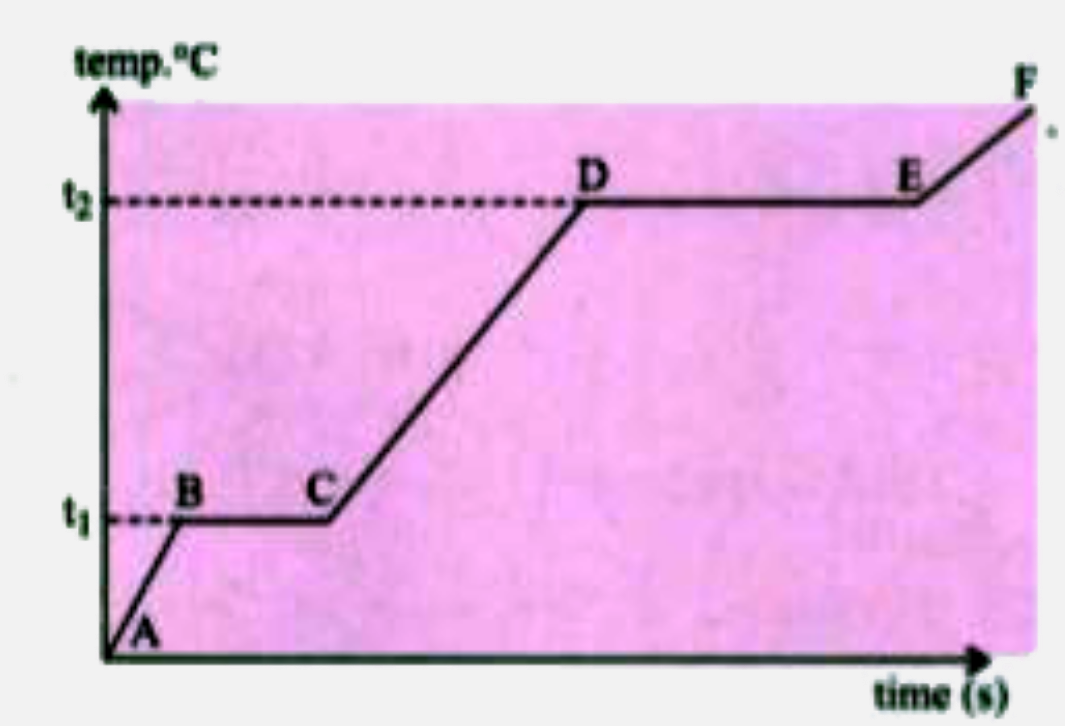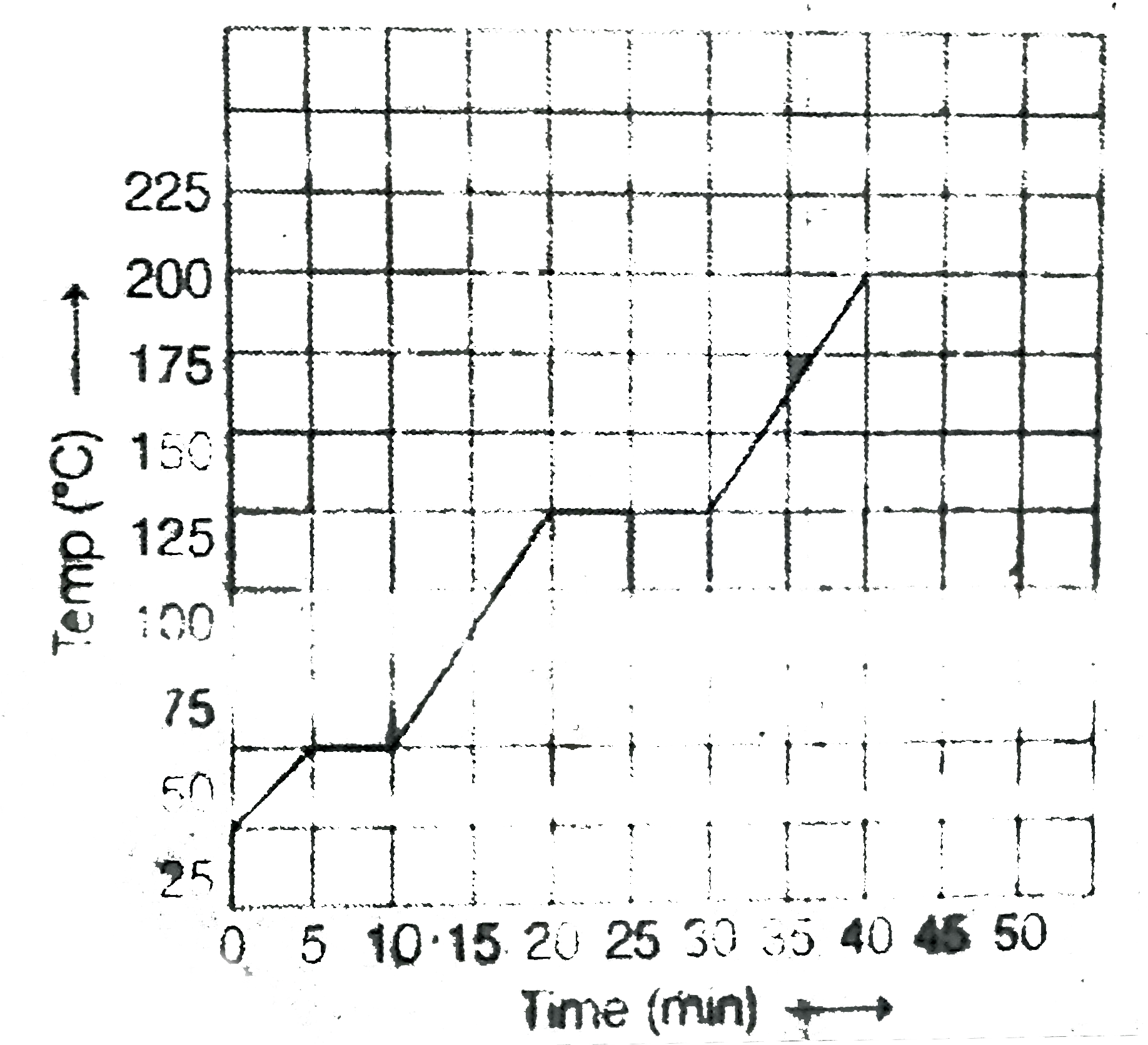The diagram below shows the change of phases of a substance on a temperature vs time graph on heating the substance at a constant rate.

What is the boiling and melting point of the substance ?
Step by step video & image solution for The diagram below shows the change of phases of a substance on a temperature vs time graph on heating the substance at a constant rate. What is the boiling and melting point of the substance ? by Physics experts to help you in doubts & scoring excellent marks in Class 10 exams.
Updated on:21/07/2023Topper's Solved these Questions
Similar Questions
The diagram below shows the change of phases of a substance on a temperature vs time graph on heating the substance at a constant rate.

Why is the slope of CD less than slope of AB ?
View SolutionThe diagram in Fig. 11.8 below shows the change of phases of a substance on a temperature-time graph on heating the substances at a constant rate.
(a) What do the parts AB, BC, CD and DE represent?
(b) What is the melting point of the substance ?
(c) What is the boiling point of the substance ?
View SolutionWhat do you understand by ‘triple point’ of a substance?
View SolutionFor any substance, why does the temperature remains constant during the change of state?
View SolutionWhich substance has the highest melting point ?
View SolutionA substance has nearly zero resistance at a temperature of 1 K What is such a substance called?
View SolutionWhy does the temperature of a substance remain constant during its melting point or boiling point ?
View Solution(a) What do you understand by the change of phase of a substance ?
(b) Is there any change in temperature during the change of phase ?
(c) Does the substance absorb or liberate any heat energy during the change of phase ?
(d) What is the name given to the energy absorbed during a phase change ?
View SolutionThe graph shown in the figure represents change in the temperature of 5 kg of a substance as it absorbs heat at a costant rate of 42 kJ min−1. The latent heat of vaporization of the substance is :

View SolutionWhat will be the change in the rate of radioactivity if the temperature of the radioactive substance is raised to four times the initial temperature?
View Solution
